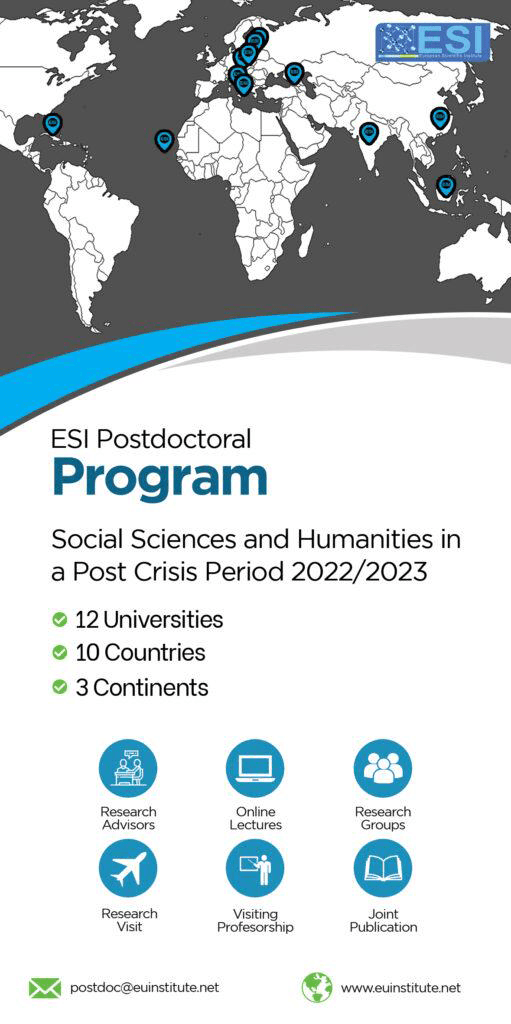A Thematic Review of Public Performance Study in Public Transportation Services
Abstract
This article presents a thematic review of studies on public performance in public transport services. Based on a structured analysis of the literature, it explores five major areas: local governance of public services, public management, Delegation of public services management, Public performance steering and Public transportation performance. The aim is to identify the main approaches, key concepts and evaluation criteria used in these fields. A summary diagram of the review is provided to illustrate the links between the various themes addressed. Drawing on the results of the analysis, the article introduces an original interpretation model - the GMDP-TC model - which provides a better understanding of the determinants of performance in the context of public transport. This contribution aims to enrich thinking on improving public performance through better governance and more effective management of transport services.
Downloads
Metrics
References
2. Amar, A., & Berthier, L. (2007). Le nouveau management public : avantages et limites. Revue Française de Gestion, 5, 14.
3. Baumol, W. J., Panzer, J. C., & Willig, R. D. (1986). Contestable Markets and the Theory of Industrial Structure. Harcourt Brace and Jovanovitch.
4. Bevir, M., & Rhodes, R. A. W. (2003). Interpreting British Governance. London : Routledge.
5. Bouckaert, G., & Halligan, J. (2008). Managing Performance: International Comparisons. London : Routledge.
6. Braun, G. (2001). Rapport d’information au nom de la Commission des finances, du contrôle budgétaire et des comptes économiques de la Nation sur une étude comparative portant sur la réforme de l’État à l’étranger (n° 348). Sénat, Paris.
7. CDG. (2016). Les outils de pilotage interne : pilotage par projets, pilotage par objectifs, contrôle de gestion.
8. CESE. (2019). Construire la performance des services publics locaux.
9. Centre International d’Études pour le Développement Local. (2019). La gouvernance locale peut contribuer à relever les défis du développement.
10. Coase, R. H. (1937). The Nature of the Firm. Economica, 4(16), 386–405.
11. Donahue, J. D. (1989). The Privatization Decision: Public Ends, Private Means. New York : Basic Books.
12. Easton, D. (1965). A Systems Analysis of Political Life. New York : Wiley.
13. El Yaacoubi, M., & Harsi, A. (2005). Rapport sur le cadre conceptuel, législatif et réglementaire des processus de décentralisation et de régionalisation au Maroc. Rapport du cinquantenaire, Maroc.
14. Faivre d’Arcier, B., Bouteiller, C., Ippoliti, L., Regouby, R., Khomenko, V., & Grimberg, M. (2018). Mesure de la performance des lignes de transport public urbain. Projet APEROL : amélioration de la performance économique des réseaux par l’optimisation des lignes, p. 104.
15. Gadsden, C. (2014). ISO 9001 et le secteur public : deux nouveaux documents et un avantage de taille pour des millions de citoyens. ISO News, 28 février. Disponible sur : https://www.iso.org/cms/render/live/fr/sites/isoorg/contents/news/2014/02/Ref1825.html
16. Hood, C. (1991). A Public Management for All Seasons? Public Administration, 69(1), 3–19.
17. Jensen, M. C., & Meckling, W. H. (1976). Theory of the Firm: Managerial Behavior, Agency Costs and Ownership Structure. Journal of Financial Economics, 3(4), 305–360.
18. La Cour des Comptes. (2014). La gestion déléguée des services publics locaux.
19. Le Galès, P. (1995). Du gouvernement des villes à la gouvernance urbaine. Revue française de science politique, 45(1), 57–95.
20. Leibenstein, H. (1966). Allocative Efficiency vs. ‘X-Efficiency’. The American Economic Review, 56(3), 392–415.
21. Osborne, S. P. (2006). The New Public Governance? Public Management Review, 8(3), 377–387. https://doi.org/10.1080/14719030600853022
22. Peters, B. G. (2000). The Future of Governing: Four Emerging Models (2nd ed.). Lawrence, KS : University Press of Kansas.
23. Pettigrew, A. (1997). Le new public management conduit à un nouveau modèle hybride public-privé. Revue Française de Gestion, 115, 113–120.
24. Tabi, M. T., & Verdon, D. (2014). Nouveaux outils de gestion de la performance des services et gouvernance publique de l’eau. Principaux enseignements tirés d’une recherche-action menée en milieu urbain. Revue Internationale des Sciences Administratives, 80(1), 219–240.
25. Talbot, C. (2010). Theories of Performance: Organizational and Service Improvement in the Public Domain. Oxford : Oxford University Press.
26. Thietart, R.-A. (1999). Le management.
27. Warner, M. E., & Hefetz, A. (2008). Managing Markets for Public Service: The Role of Mixed Public–Private Delivery of City Services. Public Administration Review, 68(1), 155–166.
28. Williamson, O. E. (1975). Markets and Hierarchies: Analysis and Antitrust Implications. New York : Free Press.
29. Work, R. (2002). Overview of Decentralisation Worldwide: A Stepping Stone to Improved Governance and Human Development. UNDP Report.
30. Zampiccoli, L. (2011). Le management public : approches conceptuelles et enjeux de pilotage. Revue Française de Comptabilité, 9, 13.
31. Zarrouk, N. (2001). Pourquoi la concession ? REMALD, 30(118).
Copyright (c) 2025 Chorouk Drissi El Bouzaidi, Jihad Jami

This work is licensed under a Creative Commons Attribution 4.0 International License.








